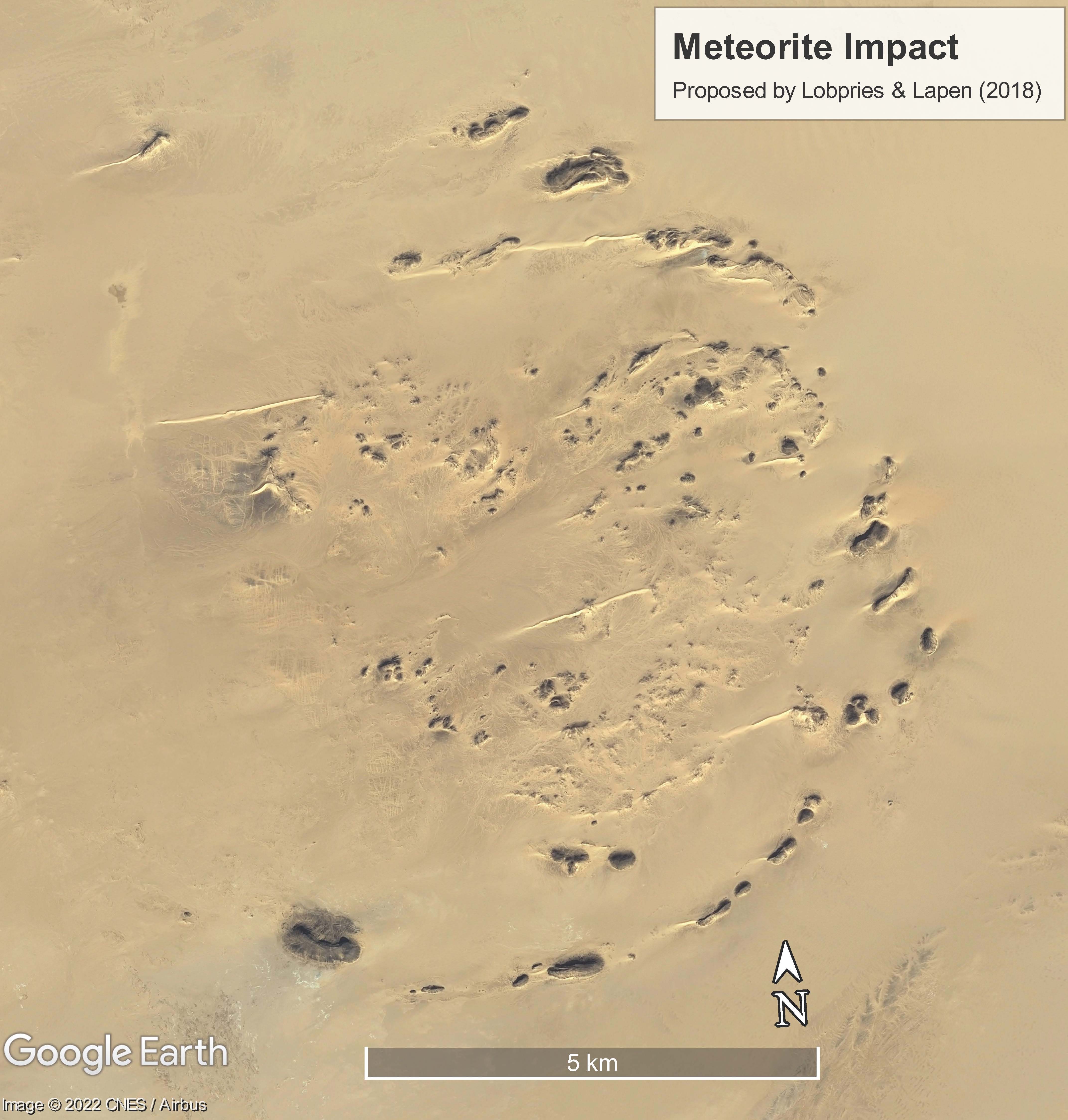Anou Izileg Fm
Type Locality and Naming
Claret & Tempère, 1968 in Algeria. Trompette [in Fabre et al., 1983] renamed the Idekel Sandstone as Anou Izileg Fm in Niger.
References: Joulia, 1959; Lessard, 1961; Claret & Tempère, 1968; Fabre et al., 1983; Derycke & Goujet, 2011; Lobpries & Lapen, 2018; Lobpries, 2020.
Lithology and Thickness
Begins with 20 m of conglomerates topped with predominantly fine anisometric sandstone. Its thickness is 0 to 155 m. On page 51 of Valsardieu (1971), it is stated a thickness of 90 m in the area of Touaret.
Relationships and Distribution
Lower contact
It is transgressive towards the South, resting unconformably sometimes on Silurian graptolitic shales, sometimes on the older Proterozoic rocks.
Upper contact
Overlying unit is the Tin Séririne Fm, more specifically its Oued Felaou Mbr.
Regional extent
GeoJSON
Fossils
West of In Guezzam, a Brachiopod fauna is found with Trigeria gaudryi, which has a Pragian character. This brachiopod fauna occurs in the finer sands higher up in the sequence. Silicified woods. In Algeria, Derycke & Goujet (2011) describe chondrichthyan and acanthodian faunas
Age
Depositional setting
Fluvio-marine
Additional Information
Lobpries & Lapen (2018) proposed that the circular feature (diameter of approximately 10 km) observed at 21°21'14.56"N Latitude and 9°8'32.24"E Longitude in the Anou Izileg Formation of northern Niger formed from either a meteorite impact (Fig. 1) after deposition of the host sedimentary units or by some other, but less likely, geologic process. The same authors add that forty meteorites of various types have been found in Niger to date (see Jérémine et al., 1964 and Web-08 under "References"), but there are currently no confirmed meteorite impact sites due mainly to the difficulty of access to conduct groundwork.
[Figure 1: The circular meteorite impact feature which is described by Lobpries & Lapen (2018) and Lobpries (2020) (Source: Image from Google Earth)]
